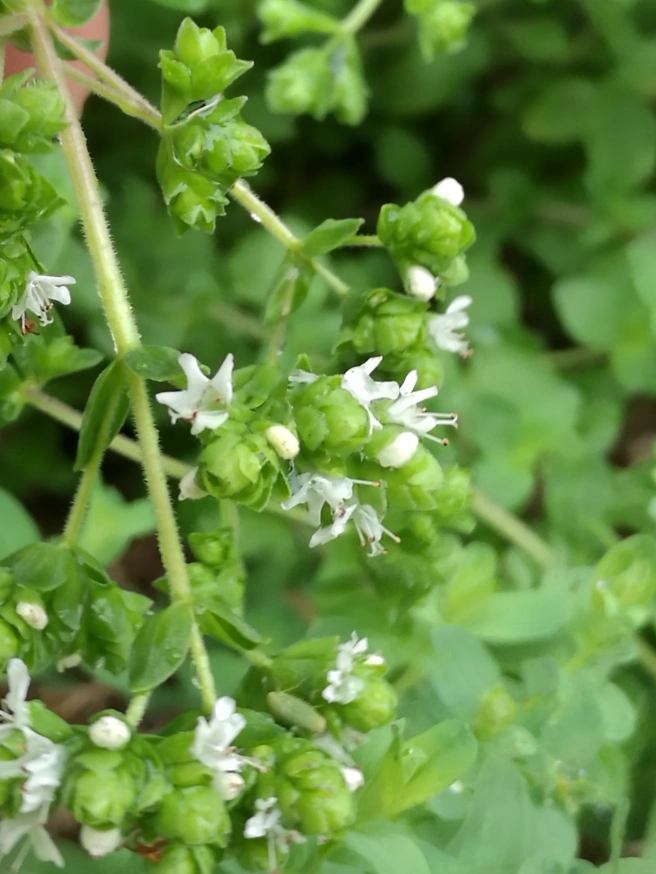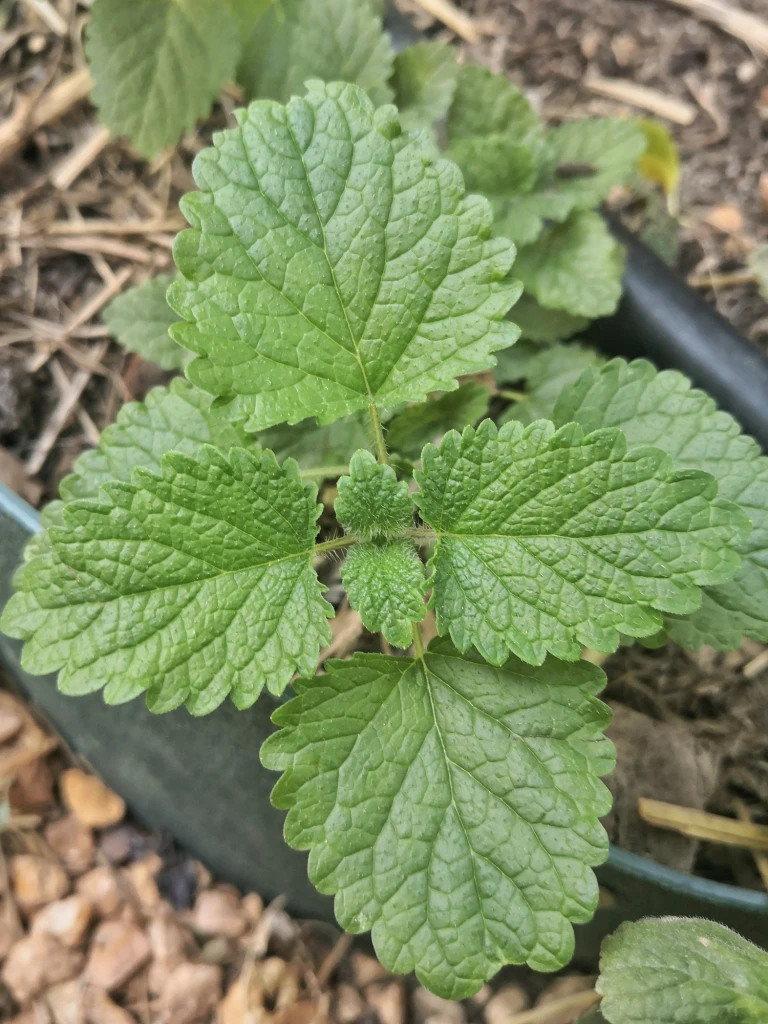
Common names: Lemon Balm, Balm, Balm Mint, Melissa
Taxonomic name: Melissa officinalis
Family: Lamiaceae
Related herbs: anything with a ‘-mint’ in its name, Sage, Rosemary, Lavender
Area of origin: Europe, Mediterranean, Central Asia
Parts used: leaves and flowers
Can be used for: depression, anxiety attacks, spasms, irritation, colds in kids, sleeplessness, hyper-anything
Organ/System affinities: liver, heart, lungs
Healing Actions: sedative, digestive stimulant, diaphoretic, nervine,anxiolytic, relaxes peripheral blood vessels, carminative, antispasmodic, antimicrobial
Taste: sour, slightly bitter
Tissue states: heat, consteriction, tension
Energetics: cooling
Healing constituents: volatile oils (including citronella), polyphenols. bitters, flavonoids, rosmarinic acid
Warnings: None that I’m aware of.
Description
A common member of the Mint family (Lamiaceae), Lemon Balm share many of the characteristics of the other Mints – A humble, creeping form, square, slightly hairy stem and lipped flowers which in Melissa’s case are white. Leaves are serrated with with rounded ends on the serrations, veined and slightly hairy. The best way to distinguish Lemon Balm from other Mints is, of course, by the smell that gives it its name.

Medicinal use
Think of Lemon Balm for anything that needs soothing.
Melissa is best known for its wonderful, uplifting aroma and has many applications, mostly through its effects on our nervous system. Lemon Balm does its stuff through it’s cooling, sedating effects on our nervous system, especially the sympathetic system (which is the part switched on during times of stress). We can tell this energetically by its sour taste. That is generally a good indication when one looks for a remedy. Taste is so important.
It is beneficial for what is termed ‘sympathetic excess’. No, that’s not when you’re feeling a little too sorry for someone, it’s when the sympathetic nervous system is switched on too much or too often. A good indication of the sympathetic nervous system being switched on is sweaty palms. Lemon Balm helps us to return to a relaxed, parasympathetic state.
So, we can see Melissa being used for heart palpitations, high blood pressure, fear, nervousness and anxiety, where the nerves need calming and soothing. For mild anxiety and even depressive states where a cup of strong Lemon Balm tea can work wonders.
Thinking this way, we can see Lemon Balm indicated in many of the ‘hyper’ syndromes of our controlling glands such as hyperadrenalism and hyperthyroidism. If we support one of our endocrine glands, we support them all because they work together in so many ways. We can find this in what is termed the HPA (Hypothalamus/Pituitary/Adrenal) axis that regulates responses to stressors. All three of those glands work together to regulate stress and immune responses.
Taking things a step further, excess in the nervous system can lead to tiredness and even depression as energy is burnt by the excessive, always on, state. Here, Melissa excels, lifting spirits and allowing energy to recover by soothing that excess. We see Lemon Balm, then, as being a useful remedy for stress, anxiety, tiredness, anything that can be caused by a lack of nervous energy.
Melissa is soothes in another way, it’s carminative constituents can act directly upon irritated tissue in the digestive tract, soothing spasms and constriction and helping gas move out. It is an astringent too, so will tone and soothe those tissues as well.
Lemon Balm can similarly be used for asthmatic conditions and upper respiratory problems, as you can tell when you inhale it’s pleasant scent. Its volatile oils soothe muscles in the respiratory tract and stimulate clearing. It’s pleasant taste makes it an excellent remedy for kids, whether used to soothe temporary overactivity and the grumpiness that comes with it or to help with mild respiratory complaints and the grumpiness that comes with those! Melissa’s relaxing nature can also be seen in its diaphoretic (sweat inducing) property when drunk hot. It relaxes the pores and allows the sweat and heat to escape through them.
Balm’s aromatic nature makes it antimicrobial and antiviral and leads to it being used as a first aid remedy for burns, blisters, sores and stings and for closing wounds without inflammation. In addition to reducing the invading microbial population, Lemon Balm reduces inflammation by opening the peripheral blood vessels to allow the buildup of blood and wastes that happens in an inflammation (afterall, that’s exactly what an inflammation is) to move away from the site and better into circulation.
Preparing and using Lemon Balm
Lemon Balm grows without hindrance in our garden. It is so useful that I go to it several times a week to enjoy it’s fragrant benefits. It is best picked on a warm Spring or Summer day – cold weather leaves aren’t anywhere as aromatic. Fresh is best with this member of the Mint family but you can get away with dried in a pinch. If you are drying it, dry it very slowly so as to not lose those beautiful oils.
My favourite way to partake of Melissa is as a cup of strong tea. Make let it brew with a cover over your cup and when ready, inhale that heavenly scent. Drunk hot, the tea has a diaphoretic effect makes you sweat. As with other amphoteric herbs, drinking it cold can make you wee, as it act as diuretic.
You can buy the essential oil and make your own medicinal oils easily enough by infusing your Lemon Balm in Grapeseed Oil.
Lemon Balm makes a very potent tincture of which you only need a minimum to get a powerful effect. and the glycerite is just dreamy.
Some of you may have seen that I've been writing a series of posts about herbs and making herbal remedies at home. I want to share what I know of this topic so that, as the world gets crazier, folks will have other avenues of medical care, namely those of themselves and their community. If you look back over this blog, you can see heaps of info on the topic, plus loads and loads of posts on herbs and using Australian bushfoods from a white perspective. If you haven't been around on in the @hivegarden and @naturalmedicine communities for long, you may be interested in looking back. There's w-a-a-a-a-y too much there for me to repost and the Hive system doesn't let you vote on old posts so, if you're happy with what you find, I believe that there is now a tip option...




